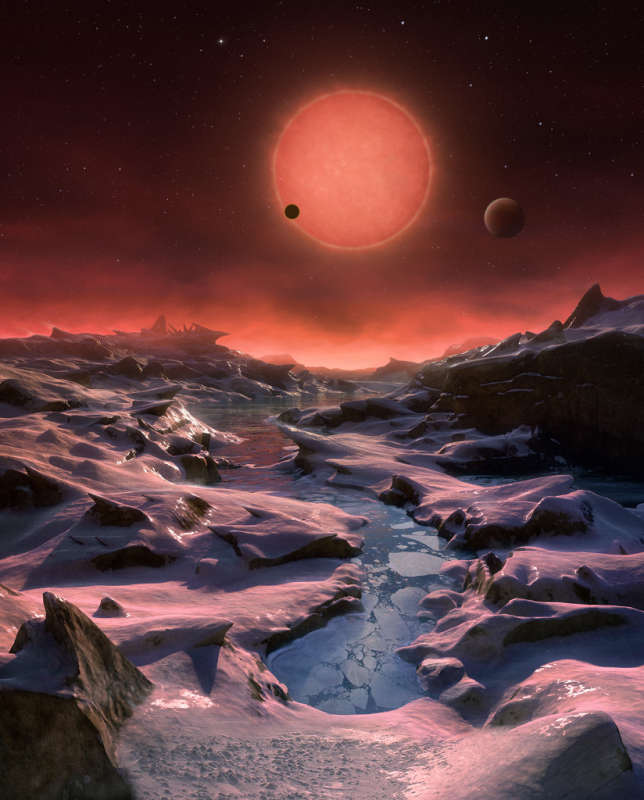
|
Credit & Copyright: ESO /
M. Kornmesser
Explanation:
Three new found worlds
orbit the ultracool dwarf star
TRAPPIST-1, a mere
40 light-years away.
Their transits were first detected by the
Belgian robotic
TRAnsiting Planets and Planetesimals
Small Telescope,
TRAPPIST, at ESO's La Silla Observatory in Chile.
The newly discovered
exoplanets are all similar in size to Earth.
Because they orbit very close to their faint, tiny star
they could also have regions where surface temperatures
allow for the presence
of liquid water, a key ingredient for life.
Their tantalizing proximity
to Earth makes them prime candidates for future
telescopic explorations of the atmospheres of
these potentially habitable planets.
All three worlds appear in
this artist's vision,
an imagined scene near the horizon of the system's outermost planet.
Of course, the inner planet is transiting
the dim, red, nearly Jupiter-sized parent star.
|
January February March April May June July August September October November December |
| |||||||||||||||||||||||||||||||||||||||||||||||||||||||
NASA Web Site Statements, Warnings, and Disclaimers
NASA Official: Jay Norris. Specific rights apply.
A service of: LHEA at NASA / GSFC
& Michigan Tech. U.
Based on Astronomy Picture
Of the Day
Publications with keywords: extrasolar planet
Publications with words: extrasolar planet
See also:
- APOD: 2024 July 8 Б Exoplanet Zoo: Other Stars
- Temperatures on Exoplanet WASP 43b
- Epsilon Tauri: Star with Planet
- APOD: 2023 October 17 Б PDS 70: Disk, Planets, and Moons
- APOD: 2023 September 20 Б Methane Discovered on Distant Exoplanet
- APOD: 2023 June 6 Б Star Eats Planet
- APOD: 2023 February 1 Б The Seventh World of Trappist 1
